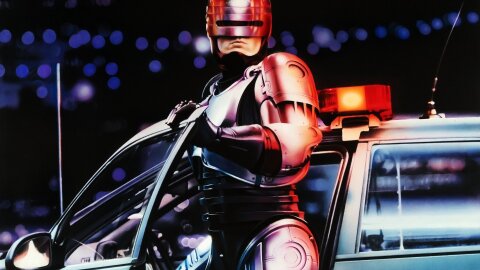


Share
Over-the-top satire. Starship Troopers. Blood and guts in the late 80s/early 90s. Co-ed locker rooms and mocking commercial advertising interludes.
The “Star Wars” Strategic Defense Initiative. Firing weapons from space, orbital platforms, and simulated gravity. Depictions of artificial gravity in media at the time.
Availability of cyborg components and social stratification. Different kinds of artificial hearts.
The economics of the brainwashed cyborg vs pure AI robot. Body transplants vs brain transplants.
Opto-neural processing enhancement. Reading visual memories from brain activity.
The resolution of the eye. Simple computer-vision and inadequacy of 1980s VHS tapes.
Cyborg body design type choices. Bipeds descending stairs. Dean Kamen’s stair-climbing gyroscopic wheelchair. (correction: I talked about “tri-wheeled” tread-based wheelchair on the show. The iBot actually had two sets of wheels and I was thinking of other wheelchair designs)
“Stop, citizen, or I will rub my poop-hands on you.” Animal noises and postural intimidation tactics. Safety alarms.
Comparison with Arthur C Clarke’s three laws.
| # | Robocop | Asimov |
|---|---|---|
| 1. | Serve the public trust. | A robot may not injure a human being or, through inaction, allow a human being to come to harm. |
| 2. | Protect the innocent | A robot must obey orders given it by human beings except where such orders would conflict with the First Law. |
| 3. | Uphold the law | A robot must protect its own existence as long as such protection does not conflict with the First or Second Law. |

Lee Colbert
Host

Christopher Peterson
Host